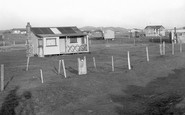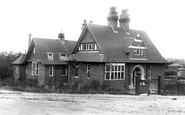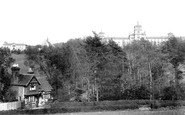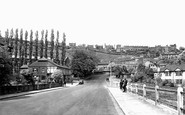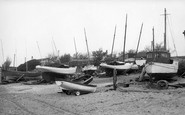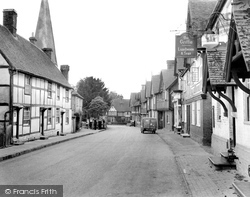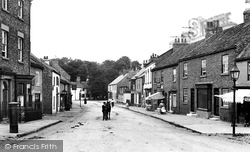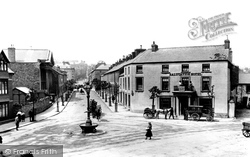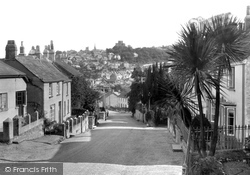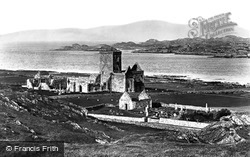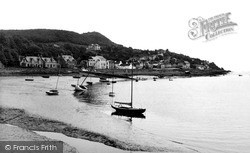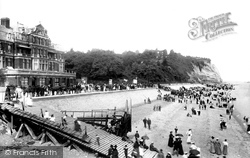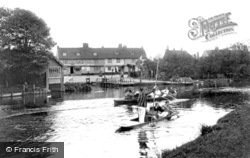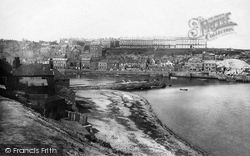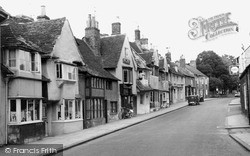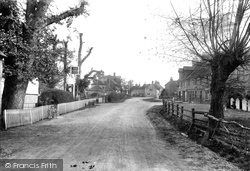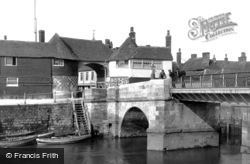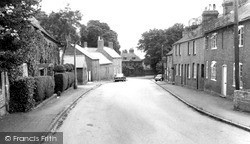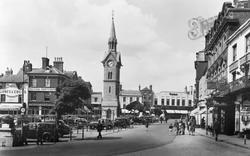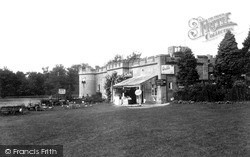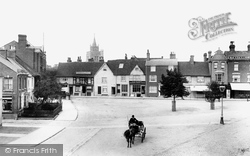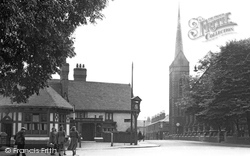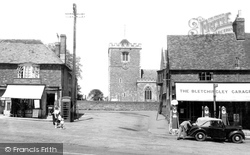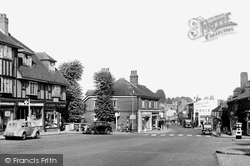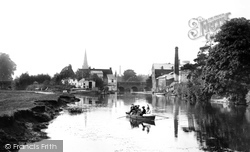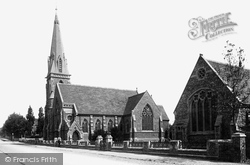Places
18 places found.
Those places high-lighted have photos. All locations may have maps, books and memories.
- Hythe, Kent
- Hythe, Hampshire
- Small Hythe, Kent
- Bablock Hythe, Oxfordshire
- Methwold Hythe, Norfolk
- Hythe, Somerset
- Hythe, Surrey
- Hythe End, Berkshire
- The Hythe, Essex
- Egham Hythe, Surrey
- West Hythe, Kent
- New Hythe, Kent
- Broad Street, Kent (near Hythe)
- Horn Street, Kent (near Hythe)
- Newbarn, Kent (near Hythe)
- Newington, Kent (near Hythe)
- Broad Street, Kent (near Hythe)
- Stone Hill, Kent (near Hythe)
Photos
360 photos found. Showing results 3,341 to 360.
Maps
101 maps found.
Books
10 books found. Showing results 4,009 to 10.
Memories
4,406 memories found. Showing results 1,671 to 1,680.
Harry Baxter Darnell, Laddies Rest, The Warren, Gronant. 1930 1940s
My grandfather was Harry Baxter Darnell, he had a bungalow on the Warren. My mother, brother Donald and sister Vera stayed there during the 2nd world war. My mother was Nellie Crossley ...Read more
A memory of Gronant in 1941 by
Growing Up In Barripper Road
My parents lived at 23 Barripper Road (David and Mair Hallett) and my sister Mandy and I went to Miss Blights (Elmhurst Preparatory School) in Bassett Road. I remember walking past the farm at the top of the road (now ...Read more
A memory of Camborne in 1955 by
Battersea
I was born in 1930 in Chelsea but moved to Haines Street, Battersea (demolished to make way for New Covent Garden in the 1960's) in 1933. Moved to No.3 Sleaford Street Battersea in 1935 and went to Sleaford Street School until 1939 (Mr ...Read more
A memory of Battersea in 1930 by
Lost And Found In Bristol
Our family had returned to England at the very end of 1948 from a short overseas BOAC posting in Montreal. My father, a BOAC pilot, was due to begin training to fly Boeing Stratocruisers at Filton in 1949, and along with ...Read more
A memory of Bristol in 1951 by
Early Years
In truth, I do not remember anything before 1948 when at the age of five I started at Moorside Primary School. I was born in 1943 and brought up in a small rented house, number 26 in King Street, situated between Faifield Road and ...Read more
A memory of Droylsden in 1943 by
Happy Time
In 1956 I was 8 years old and I had to have a minor operation at the Cottage Hospital. I remember it was warm and clean and I was treated so well by the lovely nurses; I didn't want to go home. Actually, my mum didn't come and collect me ...Read more
A memory of Aldershot in 1956 by
I Hate Reedham
My brother and I were sent to Reedham School in 1954. We were there for two years, probably the worst two years of my life, despite being put into care at the age of five and continuing until sixteen. I was known as Mathews 2 or RS 100. ...Read more
A memory of Purley in 1954 by
Pupil At Langley
Hi I was a pupil at Langley from 1973-1978. At that time I went by my first name Tanveer Jan - I now go by the name Kauser. I remembered all three of you - Pauul, Steve ( used to call you Steve Austin after the character From the six ...Read more
A memory of Baildon in 1973 by
Teddy Boys In The Fifties
Living in Hillingdon we used to catch the 207 trolley bus into Uxbridge for shopping and entertainment and particularly on Saturdays for Burton's dancing. We would hang around the underground station always fearful of the ...Read more
A memory of Uxbridge in 1959 by
Captions
4,899 captions found. Showing results 4,009 to 4,032.
The area was made notorious by the 'Piltdown Man' fake archaeological discov- eries in the 1910s.
The first mail coach from London reached here on 16 October 1789 -superseded a century later by the railway.
Note the hotel carriage by the entrance, the various horse-drawn conveyances and also the people on the hotel balcony. The building with the colonnaded frontage was the Masonic Hall.
Now on the B3254 to Bude, St Stephens Hill was one of the roads administered by the Turnpike Trust, who set the tolls.
It is said that it was Columba himself who caused the battle: he was accused by the High King of taking a psalter without permission, so Columba appealed to his clan for help in clearing his name, and
By the 1920s shipbuilding had declined, and in the years since Kippford has become a popular yachting centre, its harbour and channel busy with visiting boats in the summer months.
In 1868 the Penarth Hotel, designed by C E Bernard, was built by the Taff Vale Railway Company, and later became the Headlands School.
If you do it properly, both forward motion and steering is provided by the pole.
Taken long before the days of amusement arcades and the bandstand, this photograph shows that Pier Road and the Crag consisted solely of dwelling houses, probably occupied mainly by the fishing community
The house occupied by the courageous window-cleaner (centre) bears a 1716 datestone, and its neighbour (then, as now, housing the Royal Air Force Association) a datestone for 1663.
On the right can be seen gravestones in the churchyard of St Mary's church; it has a mostly medieval tower, but the rest of the church was rebuilt in 1855, paid for by the Broadwood family.
In 1936 Barton's, seed merchants, moved here, but were eventually bought out by the Delbridge family; grandfather, son and grandson all served in the shop. It has now become Kentucky Fried Chicken.
This, in 1891, was replaced by the current swing bridge which we see in the photograph. For the next one hundred years, it carried all road transport serving the Isle of Thanet.
This is red brick village Leicestershire at its best: nothing ostentatious in either the well- designed row of cottages (right) terminated by the Three Horseshoes pub, small and welcoming,
The white fronted Burton's at the far end is in the up-to-the-minute Art Deco style favoured by the tailoring company all over the country.
Newstead was inherited by the 'mad, bad and dangerous to know' poet Lord Byron in 1798 as a virtual ruin, and he sold it in 1817.
Long Row leads westwards uphill into Chapel Bar, now truncated by the Maid Marian Way roundabout junction with Derby Road.
Beyond them, the tall building is the Victoria Working Men's Club, built in 1887 to commemorate Queen Victoria's Golden Jubilee and funded by the ubiquitous Baron Rothschild of Waddesdon.
The church building is now used by the charity Christian Concern, and the building is actually used as a centre for second-hand furniture. It is known as St Paul's Centre.
By the chapel is this village that the Gregs built for their workers.
Off the north side of the High Street, the buildings are encroachments on the market place; Bletchingley had been a borough by the 13th century.
East from Claygate and across the Hogsmill river valley, the route reaches Ewell, now by-passed by the A24 London to Worthing road.
Now demolished, its site is occupied by the modern Upper Reaches Hotel.
The Trinity Methodist Church was complemented by the church hall, dated 1873. Beyond is Trinity House, the minister's house, probably also by Woodman.
Places (18)
Photos (360)
Memories (4406)
Books (10)
Maps (101)



